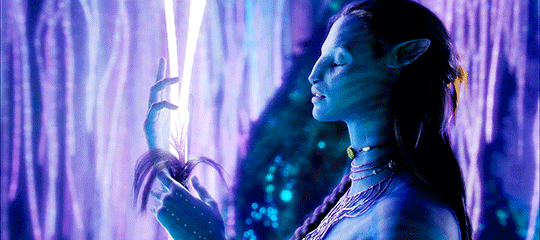As if genres and subgenres weren’t confusing enough, in comes science fantasy to make things more confusing. But no worries. If you’re wondering “What is science fantasy?” we have the answers.
You’ve probably read or watched something in this genre. It’s just not a term that’s used all that often. But fans of science fantasy are more often fans of science fiction than they are the fantasy genre alone.
That’s why it’s important to know, especially if you’re writing a novel and aren’t sure where to place your series. It’s fantasy, but it contains stuff that makes it seem like sci-fi!
What is science fantasy + examples and how to write it:
- What is science fantasy
- Science fiction vs science fantasy
- Examples of science fantasy
- How to start writing science fantasy
What is Science Fantasy?
Science fantasy is a genre of fiction that crosses over into both science fiction and fantasy fiction, including both elements of magic along with events rooted in science. Some will even claim that science fantasy is the same as science fiction, but without any of the “science” elements not adhering to our current scientific fact or knowledge.
For example, Star Wars falls under this category because the science used in ships and weapons isn’t advancement of current technology, nor does it have much of a scientific explanation, along with the magic-style use of elements like the force.
Whereas Star Trek is more firmly rooted in science and therefore remains in the science fiction genre.

Science Fiction vs Science Fantasy
The main difference between science fiction vs science fantasy has to do with where the technology and use of science comes from. If it comes from unexplainable forces, it’s most likely science fantasy. If it comes from science, can be or is explained by science, or the center of the plot revolves around the science elements, then it’s science fiction.
When we talk about “magic” in this sense, it’s not necessarily wizards with wands. As mentioned above, the use of the force in any Star Wars adaptation is considered magic. It’s a power—an ability—without scientific explanation.
This is the difference between science fiction and science fantasy. More examples will help, too.
Examples of Science Fantasy to Learn From
As I say in almost all of the blog posts I write about fiction on this site, examples teach us the most. Wondering what is science fantasy won’t do you any good. But reading some will!
Here are some examples of science fantasy to learn from:
- Star Wars (Franchise): This is perhaps the most iconic example of science fantasy. It combines futuristic technology like spaceships and blasters with mystical elements like the Force and Jedi.
- Dune by Frank Herbert: Set in a distant future where interstellar travel and advanced technology coexist with a feudal society, spice, and prescient abilities.
- The Dark Tower series by Stephen King: This series blends elements of post-apocalyptic science fiction with fantasy, as the protagonist Roland Deschain travels through a multiverse.
- Warhammer 40,000 (40K) (Franchise): A tabletop wargame and an expansive universe featuring a grim, dystopian future filled with advanced technology and magic-like psychic powers.
- Numenera (Role-Playing Game): Set in the distant future, Numenera features a world filled with ancient and highly advanced technology that appears as magic to the inhabitants.
- Final Fantasy (Video Game Series): These games often mix advanced technology, airships, and futuristic cities with magic, mythical creatures, and epic fantasy storylines.
- The Chronicles of Amber by Roger Zelazny: It combines elements of parallel worlds, advanced technology, and a royal family with god-like powers.
- The Book of the New Sun by Gene Wolfe: This series is set in a far-future Earth where advanced technology is viewed as magic. The story follows Severian, a member of the Seekers of Truth and Penitence.
- Shadowrun (Role-Playing Game): This cyberpunk-fantasy setting combines high-tech elements with magic, elves, dwarves, and other fantastical creatures.
- Avatar: The Last Airbender (TV Series): While primarily a children’s animated show, it incorporates elemental “bending” powers with a world reminiscent of ancient Asian cultures.
- The Expanse (Book Series and TV Show): Although primarily a science fiction series, it incorporates some elements that lean towards science fantasy, especially in later books where advanced alien technology is introduced.
- Hyperion by Dan Simmons: This science fiction series includes elements of far-future technology and space travel, but also delves into mysticism and mythology.
How to Start Writing Science Fantasy
All you need is a motivation to write a story. From there, you’re only a few steps away! But don’t think that means this process is easy. It can be difficult, and you’ll have to uncover many parts of the process, including the elements of fiction outside of the steps I’m teaching you here.
1. Choose your magic
If it’s science fantasy, it will have an element of fantasy. The degree and type is totally up to you. Keep in mind that many science fantasy readers usually read a lot of science fiction, and therefore will want a milder tone to the level of magic.
But, if you’re trying to branch out and attract fantasy-specific readers, then you can amp it up and use more. It’s totally up to you! Our advice is always to write what you want to read, and you can figure out which category to publish it in when that time comes.

2. Decide the technology
Of course, this is a given. Most science fantasy is set in space or on a different planet, which means the technology can be foreign and far more advanced. But you can also set your story in the future on Earth and incorporate your magic that way too.
Either way, advanced technology has to be used in order to be considered science fantasy, and not just fantasy.
The technology you use can be for many reasons, like:
- Transportation (popular)
- Housing
- Growing food and crops
- Medical or physical well-being
The more you niche-down when it comes to the technology, the more realistic and enriched the story will feel. Make it intimate. What’s a few devices you can come up with that would make your story feel whole, even if “large technology” isn’t the focus?
3. Create a character
Even though you’re wondering “what is science fantasy?”, making a character is very similar no matter the genre. This entire step should take a while as you determine what type of character will fit with the plot idea you have—the premise.
The character shouldn’t fit too well. In fact, the more “out of place” the character is, the more interesting the story.
Here are some additional resources for creating a character:
- Developing a character
- Writing a character arc
- Character flaws
- Character archetypes
- How to write an ineffective hero
- Round character examples
- Comic relief character
4. Add conflict & an antagonist
It’s time to start creating conflict! If you have a story premise, that is probably already done. The conflict in the story is what the character is fighting against—both internally and externally.
Here is where you create your antagonist as well as putting plot points together. Where will your character get stuck? What will they have to battle in order to reach the climax of the story?
5. Start plotting!
Your plot will take some time to get right. If you’re a discovery writer, just write and see where it goes. If you’re a book outliner, then you’ll have to plan for this.
What is science fantasy like when you plan it in detail?
It will usually be exciting, with a lot of build up and moments of tension. Not all stories will be like this, but those reading science fantasy often want something that moves and has tension.
Most novels can be structured like this:
- Introduction
- Inciting Incident
- Part 1
- Part 2
- Part 3
- Climax
- Resolution
This is the classic three act structure. You can obviously choose your own story structure, but at least make sure you have some build up to the biggest plot point.
6. Read and learn the genre expectations
Genre expectations are what readers can expect in the story of books found in certain genres.
And again, read the books or watch movies in this genre. Part of answering the question of “what is science fantasy?” has to be done on your own. It will be different to each person, and you might find something in it that others (including myself) don’t see.
So read, watch, and learn! Then give it a shot yourself.
And if you ever need help along the way, we have this free class put together by an author of over 60 books to teach you the basics of getting started:
